Roast Whole Turkey: the centerpiece of countless Thanksgiving and Christmas feasts, and the star of many memorable family dinners. But let’s be honest, the thought of roasting an entire turkey can be a little daunting, can’t it? I remember my first attempt a dry, flavorless bird that resembled something closer to shoe leather than a succulent holiday meal. But fear not! I’m here to guide you through the process, ensuring your roast whole turkey is a resounding success.
The tradition of serving turkey at Thanksgiving dates back to the early days of American colonization, with the bird quickly becoming a symbol of abundance and gratitude. Beyond its historical significance, the appeal of a perfectly roasted turkey lies in its versatility. The rich, savory flavor of the meat, the crispy, golden skin, and the endless possibilities for leftovers from sandwiches to soups make it a beloved dish across generations.
What makes a great roast turkey so irresistible? It’s the combination of textures the tender, juicy meat contrasting with the satisfying crunch of the skin. It’s the aroma that fills your home, signaling warmth and celebration. And, let’s not forget, it’s the sheer satisfaction of presenting a beautifully browned turkey to your loved ones. So, let’s get started and create a roast turkey that will be the highlight of your holiday table!
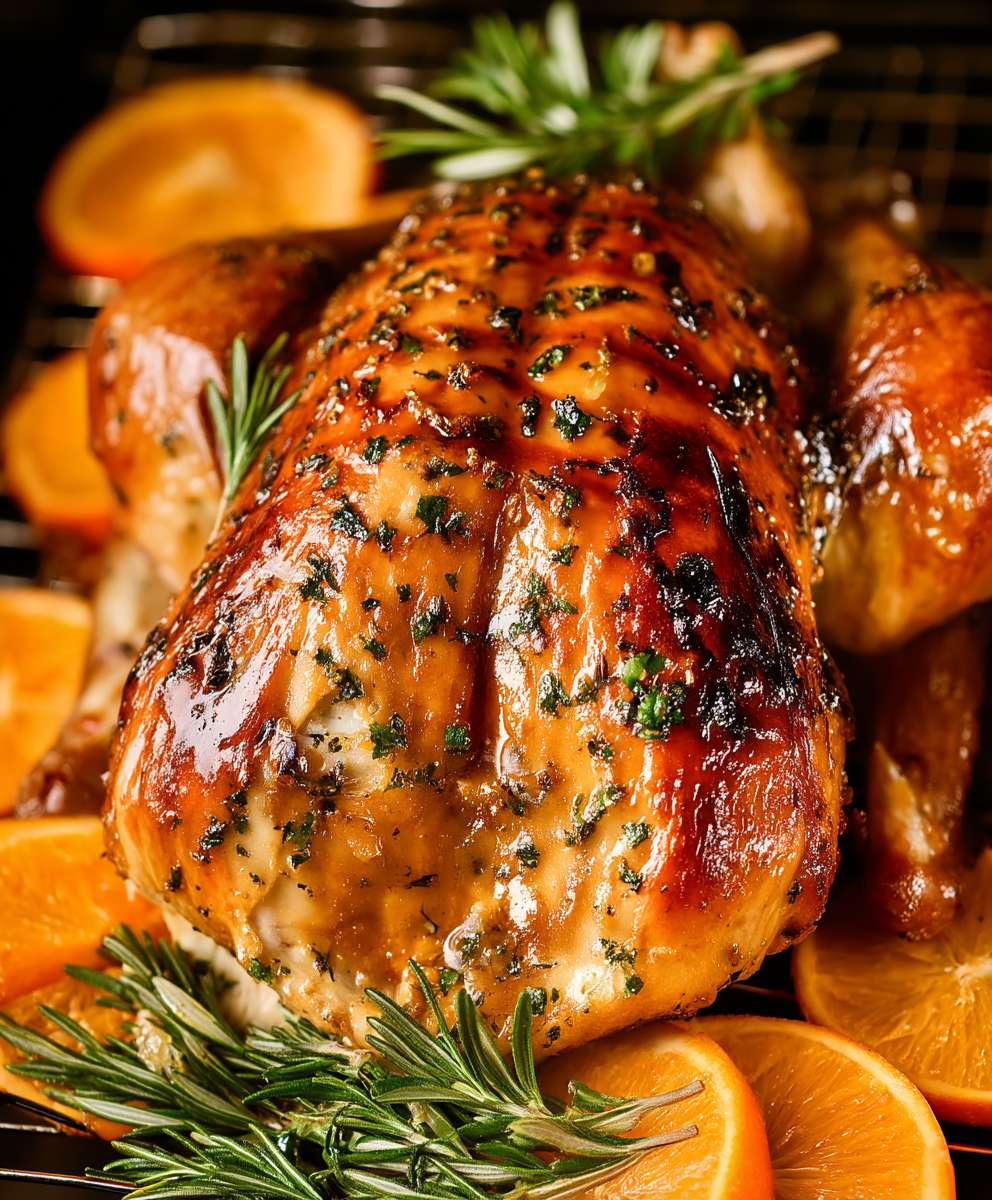
Ingredients:
- 1 (12-14 pound) whole turkey, thawed
- 1 tablespoon kosher salt, plus more for seasoning
- 1 teaspoon black pepper, plus more for seasoning
- 1 teaspoon paprika
- 1/2 teaspoon garlic powder
- 1/2 teaspoon onion powder
- 1/4 teaspoon dried thyme
- 1/4 teaspoon dried sage
- 1/2 cup (1 stick) unsalted butter, softened
- 1 large yellow onion, quartered
- 2 carrots, roughly chopped
- 2 celery stalks, roughly chopped
- 4 cloves garlic, smashed
- 1 lemon, quartered
- 4 cups chicken broth
- 2 tablespoons all-purpose flour
- 2 tablespoons turkey drippings (reserved from roasting)
- 1/4 cup dry white wine (optional, for gravy)
- Fresh herbs (rosemary, thyme, sage) for garnish (optional)
Preparing the Turkey:
- Thawing the Turkey: This is the most crucial step! If you bought a frozen turkey, make sure it’s completely thawed before you start. The best way to do this is in the refrigerator. Allow about 24 hours of thawing time for every 5 pounds of turkey. So, a 12-pound turkey will take about 2-3 days to thaw completely. You can also thaw it in cold water, changing the water every 30 minutes, but this requires more attention. Never thaw a turkey at room temperature!
- Brining (Optional but Recommended): Brining the turkey will result in a much juicier and more flavorful bird. If you have the time, I highly recommend it. To brine, you’ll need a large container (a clean bucket or cooler works well) and a brine solution. A simple brine consists of 1 cup of kosher salt and 1/2 cup of sugar per gallon of water. Submerge the turkey completely in the brine, making sure it’s weighted down so it stays submerged. Refrigerate for 12-24 hours. If you brine, reduce the amount of salt you use in the dry rub.
- Prepping the Turkey: Once the turkey is thawed (and brined, if you chose to do so), remove it from its packaging. Pat it dry inside and out with paper towels. This is important for getting crispy skin! Remove the giblets and neck from the cavity. You can use these to make gravy later.
- Seasoning the Turkey: In a small bowl, combine the kosher salt, black pepper, paprika, garlic powder, onion powder, dried thyme, and dried sage. This is your dry rub.
- Butter Under the Skin: Gently loosen the skin from the breast meat, starting at the neck cavity. Be careful not to tear the skin. Spread the softened butter under the skin, covering as much of the breast meat as possible. This will help keep the breast meat moist and flavorful.
- Seasoning Inside and Out: Rub the dry rub all over the outside of the turkey, making sure to get it into all the nooks and crannies. Season the inside cavity with salt and pepper.
- Stuffing the Cavity: Stuff the turkey cavity with the quartered onion, carrots, celery, garlic cloves, and lemon quarters. These aromatics will infuse the turkey with flavor as it roasts. You can also add fresh herbs like rosemary, thyme, and sage if you have them.
- Trussing the Turkey (Optional): Trussing the turkey helps it cook more evenly and gives it a more appealing shape. To truss, use kitchen twine to tie the legs together and tuck the wing tips under the body of the turkey.
Roasting the Turkey:
- Preheating the Oven: Preheat your oven to 325°F (160°C). Make sure your oven rack is in the lower third of the oven.
- Preparing the Roasting Pan: Place the turkey on a roasting rack inside a large roasting pan. The rack will allow air to circulate around the turkey, helping it cook more evenly. Pour 2 cups of chicken broth into the bottom of the roasting pan. This will help keep the turkey moist and prevent the drippings from burning.
- Roasting Time: The roasting time will depend on the size of your turkey. A general rule of thumb is to roast the turkey for 13 minutes per pound. So, a 12-pound turkey will take about 2 hours and 36 minutes to roast. However, it’s important to use a meat thermometer to ensure the turkey is cooked to a safe internal temperature.
- Basting the Turkey: Baste the turkey with the pan juices every 30-45 minutes. This will help keep the skin moist and golden brown. If the skin starts to get too brown, you can tent it with aluminum foil.
- Checking the Temperature: Use a meat thermometer to check the internal temperature of the turkey. Insert the thermometer into the thickest part of the thigh, without touching the bone. The turkey is done when the internal temperature reaches 165°F (74°C).
- Resting the Turkey: Once the turkey is cooked, remove it from the oven and let it rest for at least 20-30 minutes before carving. This allows the juices to redistribute throughout the meat, resulting in a juicier turkey. Tent the turkey loosely with aluminum foil while it rests.
Making the Gravy:
- Skimming the Fat: While the turkey is resting, prepare the gravy. Pour the pan drippings into a fat separator. If you don’t have a fat separator, you can carefully skim the fat off the top of the drippings with a spoon.
- Making a Roux: In a saucepan, melt 2 tablespoons of butter over medium heat. Whisk in 2 tablespoons of all-purpose flour and cook for 1-2 minutes, stirring constantly, until the roux is smooth and golden brown. This is the base of your gravy.
- Adding the Drippings and Broth: Gradually whisk in the reserved turkey drippings (about 2 tablespoons) and 2 cups of chicken broth. Whisk constantly to prevent lumps from forming.
- Simmering the Gravy: Bring the gravy to a simmer and cook for 5-10 minutes, or until it has thickened to your desired consistency. If you want a smoother gravy, you can strain it through a fine-mesh sieve.
- Adding Wine (Optional): For a richer flavor, add 1/4 cup of dry white wine to the gravy during the last few minutes of cooking.
- Seasoning to Taste: Season the gravy with salt and pepper to taste. You can also add a pinch of dried thyme or sage for extra flavor.
Carving and Serving:
- Carving the Turkey: Place the rested turkey on a cutting board. Remove the legs by cutting through the skin and joint that connects the leg to the body. Separate the thigh from the drumstick. Slice the thigh meat against the grain.
- Removing the Breast Meat: Carve the breast meat by slicing down along the breastbone, following the curve of the rib cage. Then, slice the breast meat into even slices.
- Serving: Arrange the carved turkey on a platter and garnish with fresh herbs, if desired. Serve with the gravy, stuffing, mashed potatoes, cranberry sauce, and your other favorite Thanksgiving sides.
Tips for a Perfect Roast Turkey:
- Don’t overcook the turkey! Overcooked turkey is dry and tough. Use a meat thermometer to ensure the turkey is cooked to the correct internal temperature.
- Let the turkey rest before carving. This allows the juices to redistribute, resulting in a juicier turkey.
- Use a good quality roasting pan. A heavy-duty roasting pan will help prevent the turkey from burning.
- Don’t be afraid to experiment with different seasonings and flavors. There are endless possibilities when it comes to roasting a turkey.
- Make sure your turkey is fully thawed before cooking. This is the most important step to ensure even cooking.
Troubleshooting:
- Turkey is browning too quickly: Tent the turkey with aluminum foil to prevent it from burning.
- Turkey is not cooking evenly: Make sure the oven temperature is accurate and that the turkey is placed in the center of the oven.
- Gravy is too thin: Simmer the gravy for a longer period of time to allow it to thicken. You can also add a cornstarch slurry (1 tablespoon cornstarch mixed with 2 tablespoons cold water) to thicken it.
-
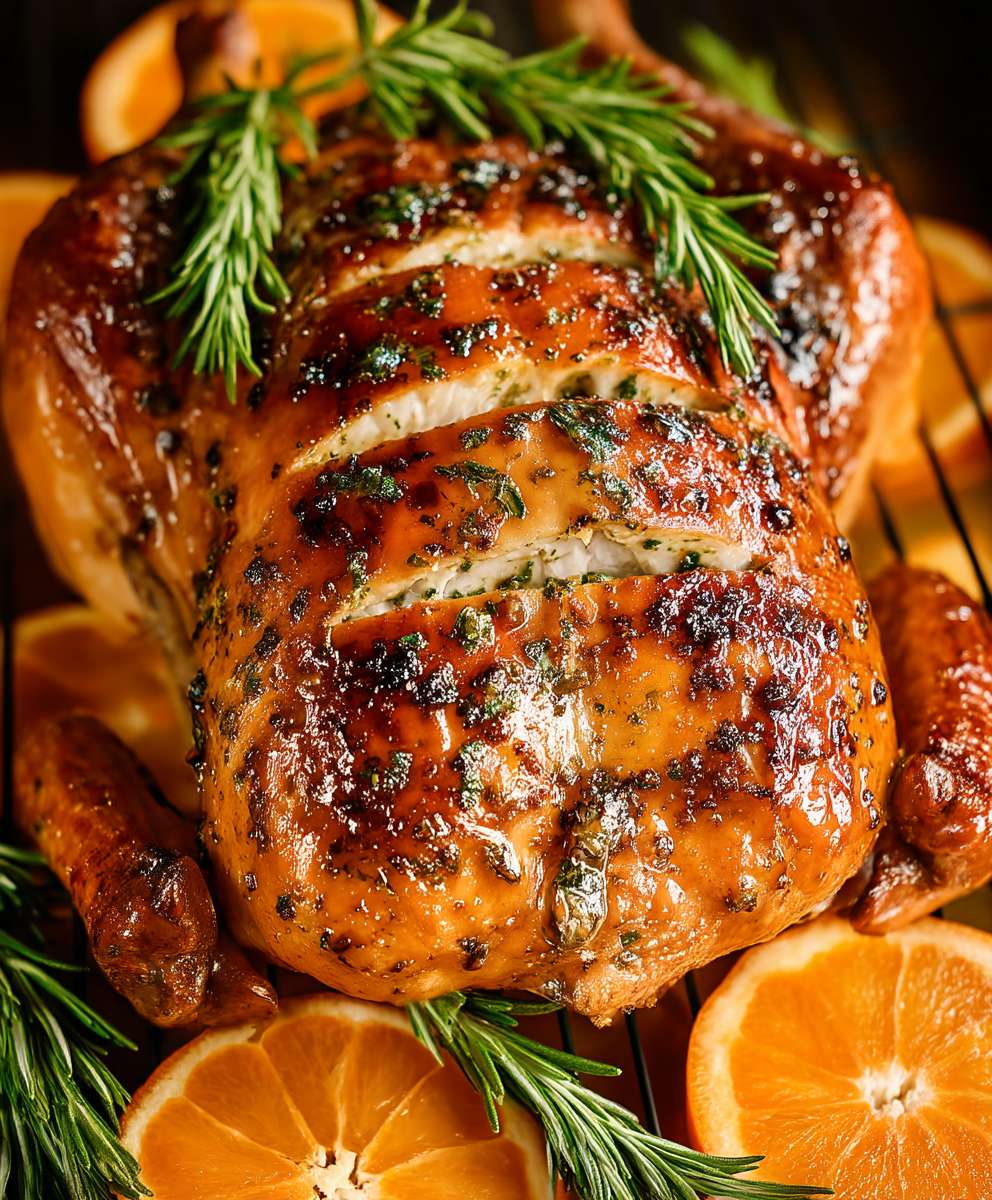
Conclusion:
And there you have it! Roasting a whole turkey might seem daunting, but with this recipe, it’s absolutely achievable and incredibly rewarding. I truly believe this is a must-try recipe, not just for Thanksgiving or Christmas, but for any occasion where you want to impress your guests with a show-stopping, flavorful centerpiece. The aroma alone, filling your kitchen with the savory scent of herbs and perfectly roasted poultry, is enough to make it worthwhile. But the real magic happens when you carve into that golden-brown skin and reveal the juicy, tender meat beneath.
Why is this roast whole turkey recipe a must-try? Because it delivers consistently delicious results. The combination of the dry brine, the herb butter, and the careful roasting technique ensures a bird that’s both flavorful and moist. No more dry, bland turkey! This method locks in the juices, creating a truly unforgettable dining experience. Plus, the crispy skin is simply irresistible.
But the best part? It’s adaptable! Feel free to experiment with different herbs and spices in the butter. Rosemary and thyme are classic choices, but you could also try sage, oregano, or even a touch of smoked paprika for a little extra kick. For serving suggestions, the possibilities are endless. Of course, traditional sides like mashed potatoes, stuffing, cranberry sauce, and green bean casserole are always a hit. But don’t be afraid to get creative! Roasted root vegetables, a vibrant salad, or even a creamy polenta would all pair beautifully with this roast turkey.
Looking for variations? Consider adding aromatics like quartered onions, carrots, and celery to the bottom of the roasting pan to create a flavorful base for gravy. You can also baste the turkey with pan juices every 30 minutes during the last hour of roasting to enhance the browning and flavor. For a spicier twist, add a pinch of cayenne pepper to the herb butter. And if you’re short on time, you can skip the dry brine, but I highly recommend it for the best results.
I’m so excited for you to try this recipe! I know you’ll be amazed at how easy it is to create a truly spectacular roast whole turkey. It’s a recipe that’s sure to become a family favorite for years to come.
So, gather your ingredients, preheat your oven, and get ready to embark on a culinary adventure. Don’t be intimidated I’ve broken down the process into simple, easy-to-follow steps. And remember, the most important ingredient is love!
Once you’ve tried this recipe, I’d absolutely love to hear about your experience. Did you make any modifications? What were your favorite sides? What did your family and friends think? Share your photos and stories in the comments below! Your feedback is invaluable, and it helps me continue to improve and refine my recipes. Happy roasting! I hope you enjoy this recipe as much as I do. I am confident that you will find this to be the best roast whole turkey recipe you have ever tried.
Roast Whole Turkey: The Ultimate Guide to a Perfect Bird
A classic roast turkey recipe perfect for Thanksgiving or any special occasion. Includes instructions for brining, seasoning, roasting, and making a delicious gravy from pan drippings.
Ingredients
- 1 (12-14 pound) whole turkey, thawed
- 1 tablespoon kosher salt, plus more for seasoning
- 1 teaspoon black pepper, plus more for seasoning
- 1 teaspoon paprika
- 1/2 teaspoon garlic powder
- 1/2 teaspoon onion powder
- 1/4 teaspoon dried thyme
- 1/4 teaspoon dried sage
- 1/2 cup (1 stick) unsalted butter, softened
- 1 large yellow onion, quartered
- 2 carrots, roughly chopped
- 2 celery stalks, roughly chopped
- 4 cloves garlic, smashed
- 1 lemon, quartered
- 4 cups chicken broth
- 2 tablespoons all-purpose flour
- 2 tablespoons turkey drippings (reserved from roasting)
- 1/4 cup dry white wine (optional, for gravy)
- Fresh herbs (rosemary, thyme, sage) for garnish (optional)
Instructions
- Thawing the Turkey: If frozen, thaw completely in the refrigerator (24 hours per 5 pounds) or in cold water (changing every 30 minutes). Never thaw at room temperature.
- Brining (Optional): Submerge turkey in a brine of 1 cup kosher salt and 1/2 cup sugar per gallon of water for 12-24 hours in the refrigerator. Reduce salt in the dry rub if brining.
- Prepping the Turkey: Remove turkey from packaging, pat dry inside and out. Remove giblets and neck from the cavity.
- Seasoning the Turkey: Combine kosher salt, black pepper, paprika, garlic powder, onion powder, dried thyme, and dried sage in a small bowl.
- Butter Under the Skin: Gently loosen the skin from the breast meat and spread softened butter underneath.
- Seasoning Inside and Out: Rub the dry rub all over the outside of the turkey. Season the inside cavity with salt and pepper.
- Stuffing the Cavity: Stuff the turkey cavity with quartered onion, carrots, celery, garlic cloves, and lemon quarters. Add fresh herbs if desired.
- Trussing the Turkey (Optional): Tie the legs together with kitchen twine and tuck the wing tips under the body.
- Preheating the Oven: Preheat oven to 325°F (160°C). Place oven rack in the lower third of the oven.
- Preparing the Roasting Pan: Place turkey on a roasting rack inside a large roasting pan. Pour 2 cups of chicken broth into the bottom of the pan.
- Roasting Time: Roast for approximately 13 minutes per pound. Use a meat thermometer to ensure the turkey is cooked to a safe internal temperature.
- Basting the Turkey: Baste the turkey with the pan juices every 30-45 minutes. Tent with aluminum foil if the skin starts to brown too quickly.
- Checking the Temperature: Insert a meat thermometer into the thickest part of the thigh, without touching the bone. The turkey is done when the internal temperature reaches 165°F (74°C).
- Resting the Turkey: Remove from oven and let rest for at least 20-30 minutes before carving. Tent loosely with aluminum foil.
- Skimming the Fat: Pour pan drippings into a fat separator or skim the fat off the top with a spoon.
- Making a Roux: In a saucepan, melt 2 tablespoons of butter over medium heat. Whisk in 2 tablespoons of all-purpose flour and cook for 1-2 minutes, stirring constantly, until smooth and golden brown.
- Adding the Drippings and Broth: Gradually whisk in the reserved turkey drippings (about 2 tablespoons) and 2 cups of chicken broth. Whisk constantly to prevent lumps.
- Simmering the Gravy: Bring to a simmer and cook for 5-10 minutes, or until thickened. Strain through a fine-mesh sieve for a smoother gravy.
- Adding Wine (Optional): Add 1/4 cup of dry white wine during the last few minutes of cooking.
- Seasoning to Taste: Season with salt and pepper to taste. Add a pinch of dried thyme or sage for extra flavor.
- Carving the Turkey: Remove legs by cutting through the skin and joint. Separate thigh from drumstick. Slice thigh meat against the grain.
- Removing the Breast Meat: Slice down along the breastbone, following the curve of the rib cage. Slice breast meat into even slices.
- Serving: Arrange carved turkey on a platter and garnish with fresh herbs. Serve with gravy and desired side dishes.
Notes
- Thawing the turkey completely is crucial for even cooking.
- Brining is highly recommended for a juicier and more flavorful turkey.
- Use a meat thermometer to ensure the turkey is cooked to the correct internal temperature (165°F/74°C).
- Letting the turkey rest before carving allows the juices to redistribute, resulting in a juicier turkey.
- If the turkey is browning too quickly, tent it with aluminum foil.
- If the gravy is too thin, simmer it for a longer period of time or add a cornstarch slurry.

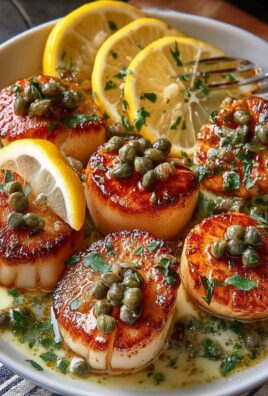
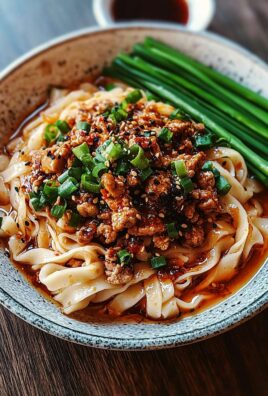
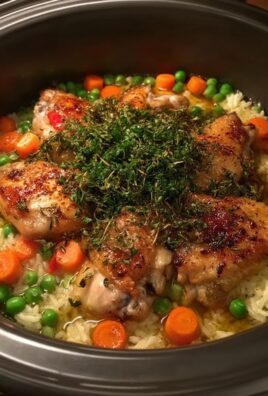
Leave a Comment